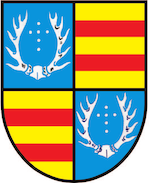Optimizing Storage: Lessons from Nature and Modern Tech
Effective storage solutions are fundamental to survival, efficiency, and innovation across natural ecosystems and technological systems. From microscopic cellular compartments to vast forest carbon sinks, nature’s storage systems embody precision, adaptability, and sustainability—principles now guiding the evolution of smarter tech storage architectures. Exploring these biological blueprints reveals how design rooted in natural laws can revolutionize how we store, retrieve, and conserve data.
1. Biological Blueprints: How Organisms Engineer Storage Efficiency
- Hierarchical compartmentalization in cells, such as endosomes, vacuoles, and lipid droplets, provides a powerful model for modular data storage. These compartments isolate distinct chemical environments, enabling parallel, efficient processing—mirroring how modern cloud systems use partitioned servers to boost performance and reduce interference.
- Selective permeability regulates molecular traffic, maintaining optimal internal conditions much like firewalls and access controls in secure tech systems. This dynamic filtering ensures storage integrity while enabling precise, on-demand data flow.
- Metabolic regulation inspires energy-aware storage cycles: just as cells store energy in ATP or release it only when needed, smart tech storage systems now use predictive algorithms to activate only essential processes, slashing power use without sacrificing speed.
„Nature’s storage solutions are not merely functional—they are intelligent, adaptive, and deeply integrated with environmental feedback loops.“
2. Adaptive Capacity: Dynamic Storage Systems Rooted in Environmental Feedback
- Nature excels at responsive storage: plant vacuoles adjust solute concentrations during drought, while animal adipose tissue dynamically expands or shrinks based on energy needs. These feedback-driven mechanisms inspire storage systems that autonomously scale capacity and adjust performance in real time.
- Biological feedback loops—such as hormonal signaling—guide self-tuning architectures. For example, distributed IoT sensor networks use decentralized decision-making to balance load and prevent bottlenecks, echoing how microbial colonies regulate internal resource distribution.
- Resilience emerges from redundancy and decentralization: ecosystems store data across multiple species and habitats, ensuring continuity even when parts fail. Similarly, modern tech storage employs geographically dispersed nodes and erasure coding to protect against data loss.
| Storage Strategy | Biological Model | Technological Application |
|---|---|---|
| Dynamic load balancing | Plant cell turgor regulation | Server clusters adjusting workloads in real time |
| Decentralized redundancy | Coral reef biodiversity | Data mirrored across global data centers |
3. Material Intelligence: Nature’s Use of Smart, Responsive Storage Materials
- Hydraulic and osmotic regulation in plant vacuoles and animal kidney tubules enables efficient water and ion storage—principles now applied in hydrogels and responsive polymers for flexible, self-regulating tech media.
- Biomineralization, such as shell formation in mollusks, constructs durable, lightweight structures through controlled mineral deposition—paralleling advances in nanostructured ceramic coatings for SSDs and secure storage devices.
- Nature’s optimization favors low-waste, high-efficiency material use. Translating this to tech storage means developing energy-efficient, long-lasting components that minimize resource consumption.
“Smart materials inspired by nature are redefining durability—self-healing surfaces and adaptive thermal regulation already enhance device longevity and reliability.”
4. From Pattern to Code: Nature’s Algorithms for Optimal Storage Density and Accessibility
- Fractal organization in natural systems—such as branching river networks or vascular tissues—maximizes storage capacity within compact volumes, directly informing high-density data indexing and hierarchical directory structures.
- Spatial and temporal logic in biological networks guides efficient retrieval: DNA packaging sequences, for example, enable rapid access via topological compression algorithms now used in next-gen indexing.
- Biological pattern recognition inspires machine learning models that predict access patterns, enabling proactive caching and adaptive query optimization in modern databases.
“Nature’s spatial intelligence offers a blueprint for organizing data in ways that balance density, speed, and adaptability—key for future AI-driven storage ecosystems.”
5. Sustainability and Longevity: Nature’s Blueprint for Enduring Storage Systems
- Closed-loop storage systems in ecosystems—where waste becomes resource—mirror circular economy principles in tech: data and materials are reused, recycled, or repurposed to extend lifecycles.
- Minimal energy input and maximal resilience define natural models: trees store carbon for decades with no external inputs, inspiring low-energy, self-sustaining data centers powered by renewables.
- Adaptive design ensures longevity: species evolve storage mechanisms to survive climate shifts; similarly, modular, upgradeable tech storage systems future-proof digital infrastructure.
“By emulating nature’s balance of efficiency and resilience, storage technologies can evolve beyond utility to sustainability—an essential shift for a world of growing data needs.”
-
Effective storage is not just about capacity—it’s about intelligence, adaptability, and harmony with natural laws. From cellular compartments to forest-wide carbon cycles, biological systems demonstrate how storage can be dynamic, resilient, and low-impact. These principles are now shaping the next generation of tech storage: systems that learn, respond, and endure—just as nature has for billions of years.
To explore how these patterns directly inform real-world innovations, return to the parent article:
Optimizing Storage: Lessons from Nature and Modern Tech
| Key Insight | Natural Model | Technological Parallel |
|---|---|---|
| Hierarchical, selective compartments | Cellular vesicles and adaptive storage systems | Modular, secure data silos with dynamic access |
| Energy-aware metabolic cycles | Predictive power management in edge devices | Low-energy idle states and burst processing |
| Fractal, space-optimized networks | DNA-based indexing and hierarchical file systems | Efficient retrieval through spatial logic |
| Closed-loop, regenerative resource use | Circular data economies and reusable hardware | Sustainable lifecycle design in storage infrastructure |

0 Kommentare